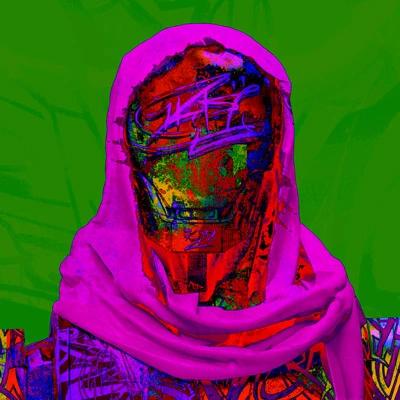I’m moving away from Windows and I’m looking for distro for coding and occasional gaming. If more context is needed please let me know.
There are a bajillion distros out there and you already have a lot of suggestions here, so instead, allow me to note a few things I think are handy while learning Linux.
- Most Linux distros are customized versions of a few base distros. Once you learn how the base distro lays things out, that knowledge is transferable (more or less) to other distros in the same family. But solutions that work in one family of distros may not work on another!
Some common base distros:
- Debian: Stability-above-all; all-rounder distro. Updates slowly, but provides a very-well-tested base that many other distros build on. Ubuntu and its derivatives are built on Debian.
- Red Hat: A commercially-focused distro that I haven’t used in a looong time, so I won’t say too much about it. Slightly less popular as a desktop basis than Debian, perhaps, but also a solid all-rounder.
- Arch: If computers were cars… Arch is for the Hot-Rodders. You have a ton of control to optimize and tweak Arch to precisely meet your needs. When you want to really dig into the machine and tune it to peak performance, this is where you begin. Fortunately, Arch-based distros often forego the detailed install of their parent and just provide a fast-updating, highly-tuned Linux experience. SteamOS is said to be a customized Arch.
- Software installation / updating is simpler and more confusing than either the Windows or Mac worlds.
It’s very rare to have a Linux program require an installer like Windows, and it’s not as simple as drag-and-drop install like Mac. Linux has had the equivalent of “app stores” for a looong time, just minus the tracking and selling parts.
Most programs in Linux get installed via a package manager tool. There are various front ends, but under the hood, there’s usually a command line program handling installation and updates.
Generally speaking, Debians use “apt”, RedHats use “yum” and Arches use “pacman”. There are also “flatpak” and “snap” both of which are more recent managers that attempt to solve dependency hell.
- The terminal is gonna come up. Love it or hate it, the terminal is still at the heart of the Linux experience. There are guis for pretty much anything you want to do, but because Linux is so highly customizable, help forums and such tend to give solutions in the one constant: bash scripts.
That said, you can get around just fine without it if you really want to. Just recognize that you might be swimming upstream at times.
- You can customize anything! Your desktop environment is pretty much a given on Windows and Mac. On Linux you can install something comfy, like Gnome (customizable, lightweight, akin to Mac UI) or KDE (less customizable, very pretty Windows-style UI).
Or try something experimental like Ratpoison - a window manager that requires no mouse inputs!
Part of the fun of Linux is trying out alternatives and truly customizing your personal computer.
…That’s it, I think!
Good luck! Have fun!
deleted by creator
Ubuntu or Mint (Ubuntu based) are the clear winners, I see recently a mild return to Fedora and OpenSuse but I wouldn’t start with them
Hey, for my recommendations keep in mind I did not use Linux as a main os for some time now. It is based on me following Linux channels and news, but also my past experience and installing it on my laptop and my brother’s laptop.
Linux distros are different in the packages they choose to include for their environment, use and desktop. Some distros offer different desktop environments (which are different desktop softwares, with different handling of included apps, settings and theming).
Depending on how well you know how to search online and not follow outdated advice, some different distros can be interesting :
Beginner friendly for Linux :
- Linux Mint (cinnamon desktop)
- Pop OS (gnome desktop)
- Ubuntu (gnome desktop) (maybe, but I’d rather choose Pop OS due to snap packages of Ubuntu beeing forced and having lower quality compared to apt and flatpak)
All desktops can be themed. Tho cinnamon I don’t know how well it supports modifying the task bar.
Gnome can have extensions to do things, show a bottom task bar, start button, start menu…
For these 3 distros, the system package manager used (installer, app searcher) is apt-get (shortened to apt). It is a well k’ow package manager with plenty of tutorials online. All also include flatpak, which is a special package manager where apps Comme bundled with their own dependencies (software to make the main software work), and so reduce incompatibilities.
Ubuntu as a package manager called snap installed by default, it has the same objective as flatpak, but it is closed source, and already had issues with malware spreading through it.
Obviously all 3 package managers can have issues, as community is there to check the apps, but it may not always be safe. The safest package source is still the system one apt as packages are checked by the people maintaining the main distro repo. But many flastpaks and snaps are safe. (tho they can have some theming issues).
All of these 3 include a GUI store where you can search and install apps.
Another great distro which can work for beginner or advanced
- Fedora desktop (gnome) (It is also available with the kde desktop). Tho this one has a smaller community, and so there is less useful help online, and there may be more out of date advice you would have to navigate through.
Fedora has a pretty good documentation, but even that one seems to be a bit out of date on some things.
If you have an nvidia driver, this one doesn’t have nvidia proprietary drivers installed by default nor help at the beginning on automatically installing them. You have to enable at install (or after in the store settings) the nvidia closed repo and install the nvidia driver from the store.
Kde as a desktop is pretty great, tho it can be overwhelming with all it’s settings and options available to the user.
Gnome tho still requires an app to be able to control hidden settings like mouse acceleration and some other settings.
I wouldn’t recommend other distros for beginner or someone who just wants to easy setup and work.
Debian is pretty stable even in its “testing” branch (Debian stable = old bur rock solid, not recommended for gaming. Testing = newish, still not breaking. Unstable = unstable) needs to have a manual install or help through someone’s script.
Manajaro is a mess. On some devices it will work, on other it will just desintegrate after some months.
Or the communities are so small that packages may easily pass testing and break.
This is a great beginner friendly comment. I really appreciate you for that.
Between Mint and Pop_OS: recommendation for how to pick between them?
Coming from MacOS, haven’t used Windows in a number of years.
If it would make a difference it’s for a Lenovo Legion Slim 5 (Ryzen 7 7840HS; NVIDIA RTX 4060).
I want to dual boot, using the Windows side for gaming, for now, and Linux for other tasks.- Mint = the desktop is closer to windows look.
- Pop os = the desktop is closer to mac look. With extensions and settings with those, it can be even closer.
However keep in mind that Pop OS is developing their own desktop to get away from gnome (the name of the desktop environment(DE) (the bunch of apps and tools making the desktop and settings work)).
That new DE will most likely not be compatible with gnome extensions. And I don’t know how it will look.
For functionality, both work pretty well.
-
Pop os has 2 ISO : one which includes the nvidia driver, and another without the Nvidia driver, should be easy to download the right one.
-
Mint I don’t remember exactly how it works, but it should be easy enough to download and install the proprietary nvidia driver, either through a driver tool, or through the store.
-
Pop os has a gnome extension which allow you to switch from integrated gpu / hybrid / nvidia “only” directly from the notification menu.
-
to switch in mint, you need to open the nvidia control panel.
Both need a reboot or log out to switch gpu mode.
(keep in mind, the Nvidia gpu consumes a lot more than the cpu integrated one. In hybrid, nvidia gpus canot be put to 0w sleep yet, so it will still consume some power).
Both need a special argument for app launch or steam launch arguments to launch with the nvidia gpu if you set hybrid.
For boot :
- Pop os bypasses grub (a Linux boot menu), so to choose the os to boot from, you’ll have to either use your laptop’s boot menu or the bios priority.
- Mint has a grub boot menu displayed each time. So if you choose mint as priority boot, you can at boot still choose windows (about 5-10 sec to use the arrows to boot into something else than mint).
Disadvantage :
- Pop OS still needs an additional app to be able to change all settings, including mouse acceleration (say thanks to gnome devs, theming has become harder to do for non gnome standard themes).
- Mint : they only now made plans to develop their DE to support Wayland (a new window manager explained a bit further), and so you could have a bit less track pad fluidity (no 1to1 gestures … ). Tho as the DE used is cinnamon, there is less use of track pad gestures.
About Wayland : it’s a “new” windows manager (what allows apps to be displayed, and how they interact with each other). It is a hopeful replacement for X11 (released in 198X, before Linux…) full of issues but still working well for what it has to do. Wayland wants to bring enhancements on security, gesture fluidity and many other things. However it is not yet fully developed and you shouldn’t really base your decision on it yet.
For the rest. I don’t really remember other disadvantages as i don’t really use them anymore.
Thank you for this comprehensive answer. It brought up some new considerations, but that’s a good thing — like learning about Wayland, switching to/from use of gpu (which I didn’t even know was a thing), and Pop_OS moving away from gnome. I appreciate that you took the time to write this full answer!
There is a lot to learn for Linux. Search engines are your best friend. Tho sometimes advice is outdated. There are also some discord servers where help exists, tho they also expect someone asking to do their research.
I mostly learned by YouTube, then doing research on Google and other search engines, on forums… Discord servers were my last resort when I had some specific question.
Linux for all : https://discord.gg/eSP6cXjY4B Gaming on Linux : https://discord.gg/AghnYbMjYg The Linux experiment (YouTuber) also has a discord server…
Honestly, just go with Ubuntu. If there are any problems you can very easily find answers. Second option would be the get something Ubuntu based, like Mint and Pop OS. Being based in it basically means they take Ubuntu and modify a bit to their liking but at the core they’re Ubuntu, meaning that almost everything you find for Ubuntu will work for them.
You can always switch later to something else if you feel like it.
Opensuse for peace of mind ( + its kinda very stable arch experience ) , or as always for new linux users go with linux mint
Unless you want to f around just install Ubuntu and be done with it
- an arch user btw
Linux Mint is awesome for beginners.
Pop_OS!
Fedora, OpenSUSE, Ubuntu are all good for beginners.
I had a great experience with Ubuntu as a Linux first timer. Still using it 5 years later!
Hannah Montana Linux.
I recommend an Ubuntu fork, like Pop OS, just because Ubuntu forks seem to be more stable in my experience.
But if you want to do a lot of tinkering to get random weird hardware to work, then use an Arch fork, like Endeavour OS or Manjaro. Because normally if you find an obscure project on GitHub that you want to try out, it’ll probably need you to download, compile, and then install their package on Ubuntu. But if you’re on Arch they will likely have an AUR package that you can just go and install with a single command.





